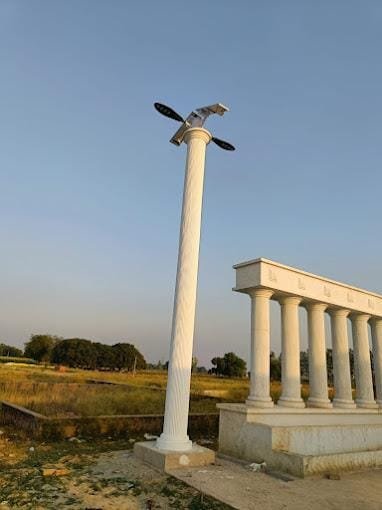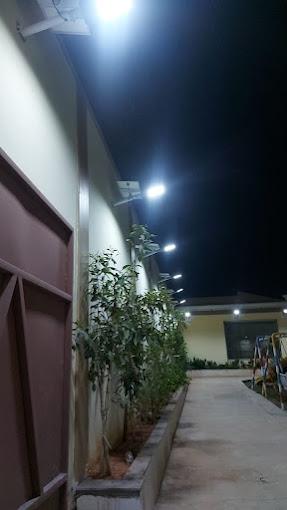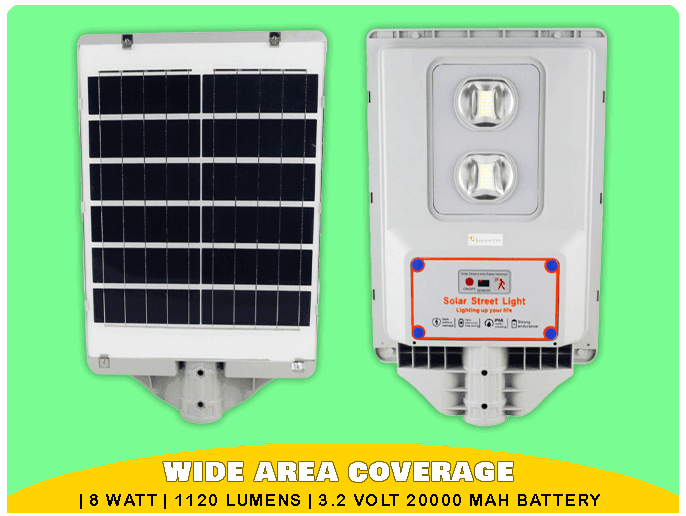Installing solar street lights requires careful planning and execution to ensure optimal performance and longevity. Whether you are a homeowner, business owner, or municipality, these top 10 installation tips will guide you through the process and help you make the most of your solar street light installation. By following these tips, you can ensure a successful and efficient installation that maximizes the benefits of solar street lights.

Click Here to View Details of the Light Installation In the Image Above
Table of Contents
- Introduction: Harnessing the Power of Solar Street Lights
- Site Assessment: Choosing the Right Location
- Solar Panel Placement: Maximizing Sun Exposure
- Battery Sizing: Ensuring Sufficient Storage Capacity
- Proper Wiring and Connections
- Mounting Height and Angle
- Light Distribution and Illumination
- Maintenance and Cleaning
- Safety Considerations
- Testing and Commissioning

1. Introduction: Harnessing the Power of Solar Street Lights
Solar street lights provide a sustainable and energy-efficient lighting solution that harnesses the power of the sun. To ensure a successful installation, it’s essential to consider various factors and follow best practices. Let’s explore the top 10 installation tips for solar street lights.

2. Site Assessment: Choosing the Right Location
Conduct a thorough site assessment to determine the most suitable location for your solar street lights. Consider factors such as sunlight availability, shading from nearby structures or trees, and potential obstructions. Choose an area with maximum sun exposure throughout the day to optimize the performance of your solar street lights.
3. Solar Panel Placement: Maximizing Sun Exposure
Proper placement of solar panels is crucial for maximizing sun exposure and energy generation. Install the panels in a location that receives direct sunlight without any shading during peak daylight hours. Tilt the panels at an angle that aligns with the latitude of your location to capture the maximum amount of sunlight.
4. Battery Sizing: Ensuring Sufficient Storage Capacity
Select batteries with adequate storage capacity to ensure reliable operation of your solar street lights. Consider factors such as the desired autonomy (number of consecutive nights the lights can operate without charging), weather conditions, and lighting requirements. Properly sized batteries will provide sufficient energy storage for optimal performance.
5. Proper Wiring and Connections
Ensure proper wiring and connections between the solar panels, batteries, charge controller, and LED lights. Use high-quality cables and connectors that are suitable for outdoor environments and capable of handling the electrical load. Proper wiring minimizes energy losses and ensures efficient power transfer.
6. Mounting Height and Angle
Determine the appropriate mounting height and angle for your solar street lights to achieve optimal lighting distribution. Consider factors such as the width of the area to be illuminated, the required light intensity, and potential obstructions. Mount the lights at a height and angle that provide maximum coverage and minimize shadows.
7. Light Distribution and Illumination
Ensure proper light distribution and illumination by positioning the solar street lights strategically. Consider the desired lighting pattern, aiming to achieve uniform illumination without glare or dark spots. Properly positioned lights enhance visibility and safety while maximizing energy efficiency.
8. Maintenance and Cleaning
Establish a regular maintenance schedule for your solar street lights to ensure optimal performance and longevity. Clean the solar panels periodically to remove dust, dirt, and debris that may reduce their efficiency. Inspect the system for any signs of wear or damage and perform necessary repairs or replacements promptly.
9. Safety Considerations
Prioritize safety during the installation process. Ensurethat the installation is conducted by qualified professionals following industry standards and local regulations. Use proper safety equipment and procedures to prevent accidents and injuries. Consider safety measures such as secure mounting, proper grounding, and protection against electrical hazards.
10. Testing and Commissioning
Thoroughly test and commission the solar street lights before putting them into operation. Verify that all components are functioning correctly, including the solar panels, batteries, charge controller, and LED lights. Test the lighting performance and ensure proper operation of any additional features such as motion sensors or dimming capabilities.

Conclusion
Installing solar street lights requires careful planning and adherence to best practices. By following these top 10 installation tips, you can ensure a successful and efficient installation that maximizes the benefits of solar street lights. Conduct a site assessment, optimize solar panel placement, select appropriate battery sizing, establish proper wiring and connections, and consider factors such as mounting height, light distribution, maintenance, safety, and testing. With a well-executed installation, you can harness the power of solar street lights to illuminate your outdoor spaces efficiently and sustainably.
If you would like to see the Unboxing Videos of all the street Lights Click here
